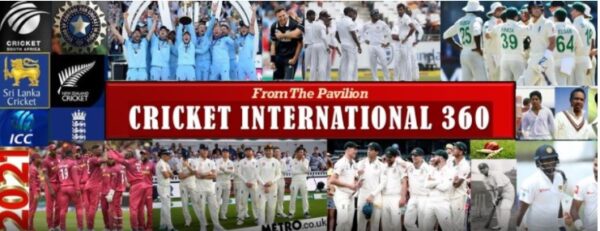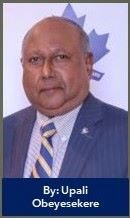History of Cricket – CRICKET INTERNATIONAL 360 – by Upali Obeyesekere

Source:Facebook

The first national cricket team in Ceylon was formed by the Colombo Cricket Club in 1832. A ‘gentlemen’s team’ idea, exclusively for the British folk in Ceylon, was first suggested by the Patrons of the Colombo Social Club for the British Upper Class. It was located initially at the Galle Face Green, and the Ceylon National cricket team was founded in 1920.
The game of Cricket originated in England towards the mid-16th century. It spread globally with the expansion of the British Empire. Cricket’s Governing Body is the International Cricket Council (ICC), which comprises over one hundred members; full members are engaged in Test Matches. The Laws of Cricket are maintained by the Marylebone Cricket Club (MCC) in London, founded in 1787.
The LBW ( leg before wicket ) regulation was introduced towards the latter part of the 18th century. Dr. W.G. Grace, a right-arm pace bowler in England, developed the game in England, while playing Cricket in the field as well, during the 19th century. The first England Vs Australian team took place at the Oval in 1876 in S.E. London. The competition between England and Australia gave birth to what is known as ‘The Ashes’ in 1882.
This tradition is carried forward up to this day. Cricket entered a new epoch in 1963 when County cricket introduced the ‘limited over’ match concept. It enabled the first limited over Cricket played in 1971, and the ICC recognising its potential and held the first limited-over match, the World Cup, in 1975.
Sri Lankan Cricket
All cricket activities were controlled and executed formerly by the Board of Cricket, but now it is known as the Sri Lanka Cricket. Cricket needs excellent and efficient Management to improve the game to bring it back into its splendour again. When effective Management is in place, it naturally boosts the players’ morale to perform better. What recently happened was that influential individuals with good standing, through their political or financial influence got into Sri Lanka Cricket, which did more harm than good to the game. Politicians such as the late Dr. N.M. Perera took the lead to improve Cricket, followed by the late Minister Gamini Dissanayake, who followed it up. The two gentlemen contributed to the game of Cricket immensely.
When Gamini Dissanayake became the President of the Board of Control of Cricket, he took a special trip to London, especially to have face-toface discussions with the ICC officials. ICC initially refused to grant membership to Sri Lanka stating that ‘Sri Lankan Cricket ” did not pull spectators to test matches; as such, the ICC was unwilling to take a gamble.”
On 22 July 1981, at the MCC Grounds, Gamini Dissanayake appealed to the ICC thus: “Give us the Full Membership, and we will look after the rest.” Finally, he returned to Sri Lanka with the good news of ICC enrolling Sri Lanka also as a member of the ICC. The late Gamini Dissanayake also made improvements to various other cricket grounds across the country.
He improved The Singhalese Sports Club in Colombo (SSC), Galle Esplanade, Moratuwa Grounds, and the Grounds at Radella. The late Gamini Dissanayake opened doors to every schoolboy, wide across the country, who shone in the field of Cricket at a time when it was conclusively selected from Colombo schools. It was Gamini Dassanayke’s dream to see Sri Lankan cricketers to become professionals.







